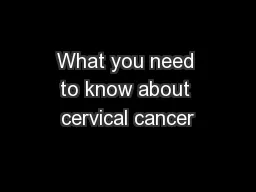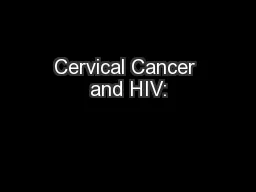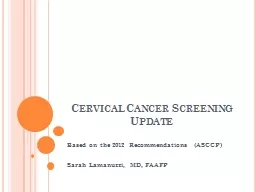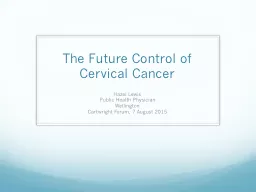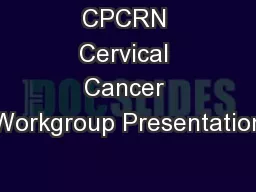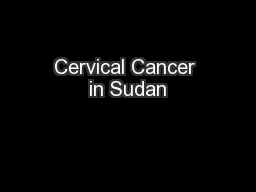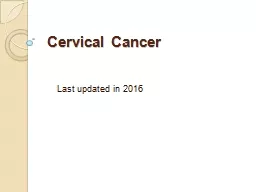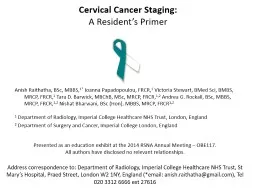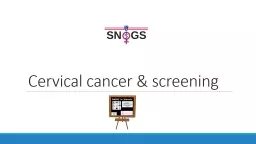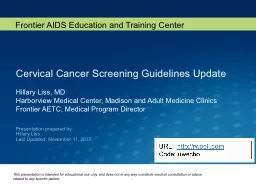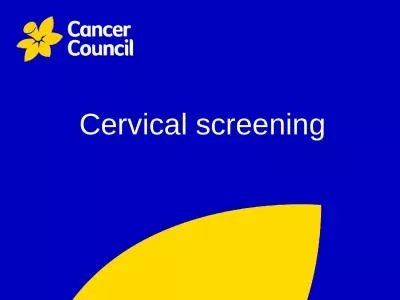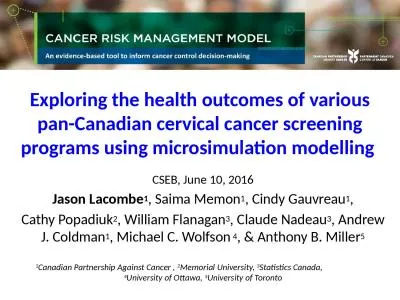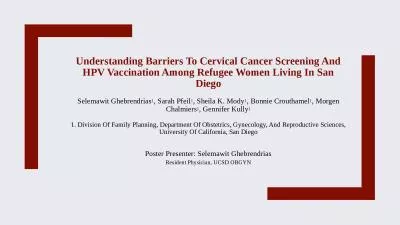PPT-What you need to know about cervical cancer
Author : olivia-moreira | Published Date : 2018-11-09
Cervical Cancer Statistics United States An estimated 12000 new cases each year An estimated 4000 deaths each year 700000 cases of severe precancer International
Presentation Embed Code
Download Presentation
Download Presentation The PPT/PDF document "What you need to know about cervical can..." is the property of its rightful owner. Permission is granted to download and print the materials on this website for personal, non-commercial use only, and to display it on your personal computer provided you do not modify the materials and that you retain all copyright notices contained in the materials. By downloading content from our website, you accept the terms of this agreement.
What you need to know about cervical cancer: Transcript
Download Rules Of Document
"What you need to know about cervical cancer"The content belongs to its owner. You may download and print it for personal use, without modification, and keep all copyright notices. By downloading, you agree to these terms.
Related Documents

